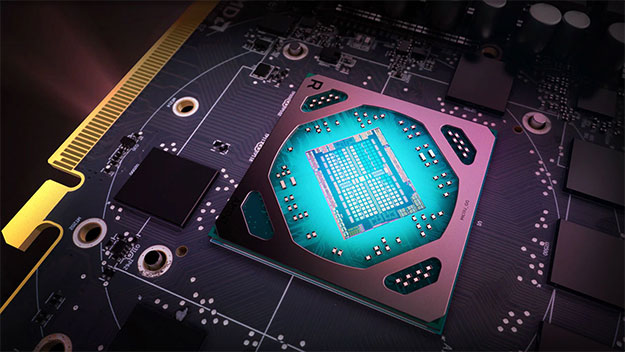AMD Navi GPUs Could See Big Performance Boost With Variable Rate Shading Tech

A recently published patent application suggests that AMD might be infusing a technology called Variable Rate Shading (VSR) into its upcoming Navi GPU architecture, which is expected to arrive later this year. The patent application does not actually specify Navi, though it is definitely a possibility, given when the patent was filed and subsequent date of publication.
AMD filed the patent in August 2017, and it was published yesterday. AMD had already been developing its Navi GPU architecture in 2017, and had also begun taping out its 7-nanometer FinFET manufacturing process around the same time (a tape out is when a company like AMD finalizes its semiconductor design before sending it off for manufacturing).

Source: FreePatentsOnline via AMD
VSR is a rendering technique designed to lessen the load on the GPU and other resources, for added performance without a hit to the perceived visual fidelity of a scene. It accomplishes this by breaking up a frame into different sections and rendering only parts of a frame in full detail, those being the area(s) you are most focused on, and using coarser pixels around the edge of a user's vision.
VR headsets stand to the gain the most from this tech, where your eyes are focused on the center. That said, VSR could conceivably be used in other ways for gaming on the desktop. This could especially be beneficial at higher resolutions that are more taxing on a GPU, such as 4K, and eventually 8K if we want to look that far down the road.
AMD is not alone in seeing the benefit of VSR. NVIDIA implemented a version of the technology into its Turing GPU architecture. Here's NVIDIA's explanation of VSR:
Variable Rate Shading is a new, easy to implement rendering technique enabled by Turing GPUs. It increases rendering performance and quality by applying varying amount of processing power to different areas of the image. VRS works by varying the number of pixels that can be processed by a single pixel shader operation. Single pixel shading operations can now be applied to a block of pixels, allowing applications to effectively vary the shading rate in different areas of the screen. Variable Rate Shading can be used to render more efficiently in VR by rendering to a surface that closely approximates the lens corrected image that is output to the headset display. This avoids rendering many pixels that would otherwise be discarded before the image is output to the VR headset.
There is definitely widespread interest in VSR. Related to that, Microsoft also owns a VSR patent and is working to implement it into the DirectX API. Whether it extends beyond VR headsets and into the realm of desktop monitors, though, we will have to wait and see.

